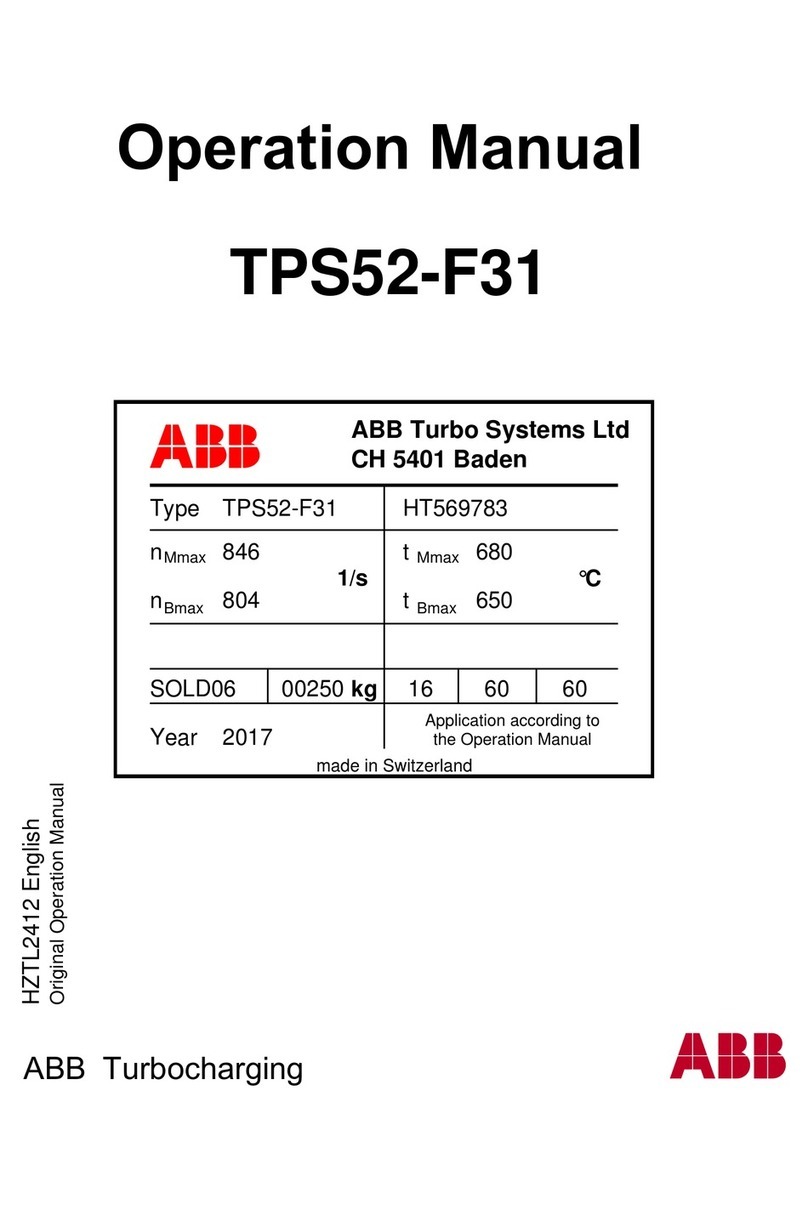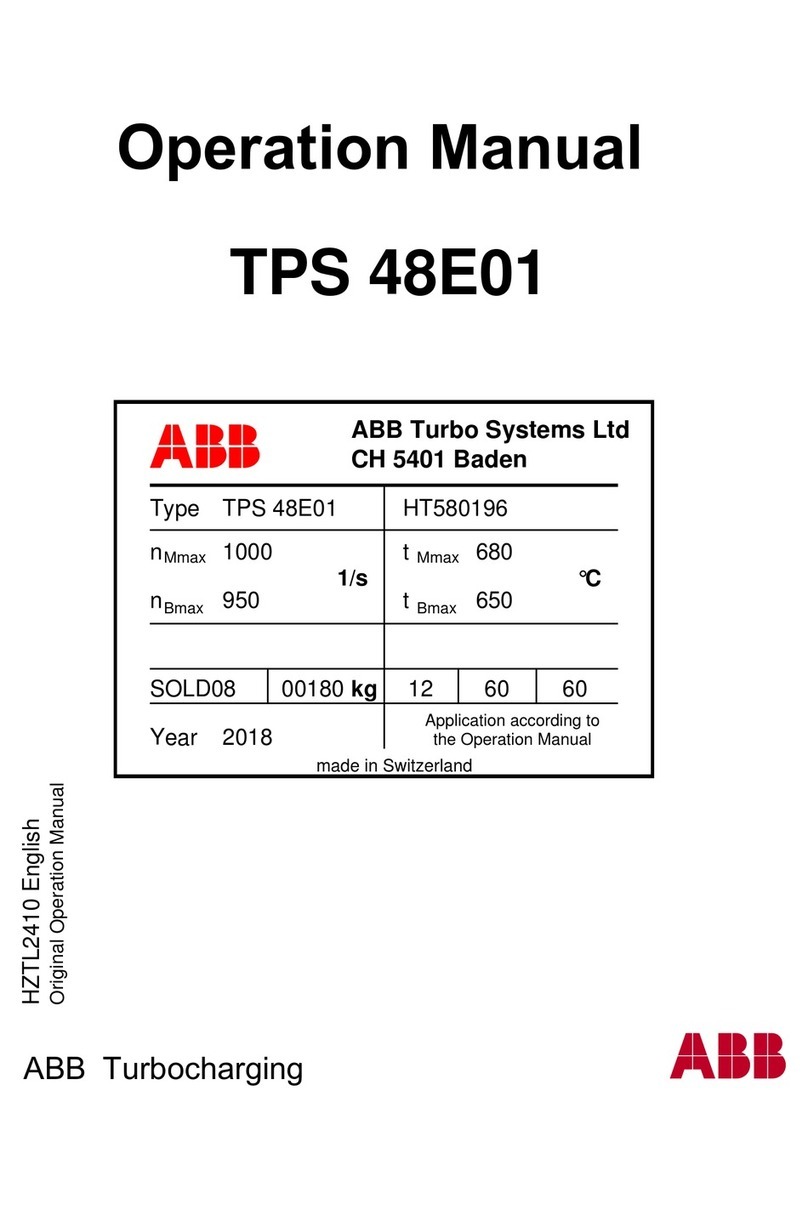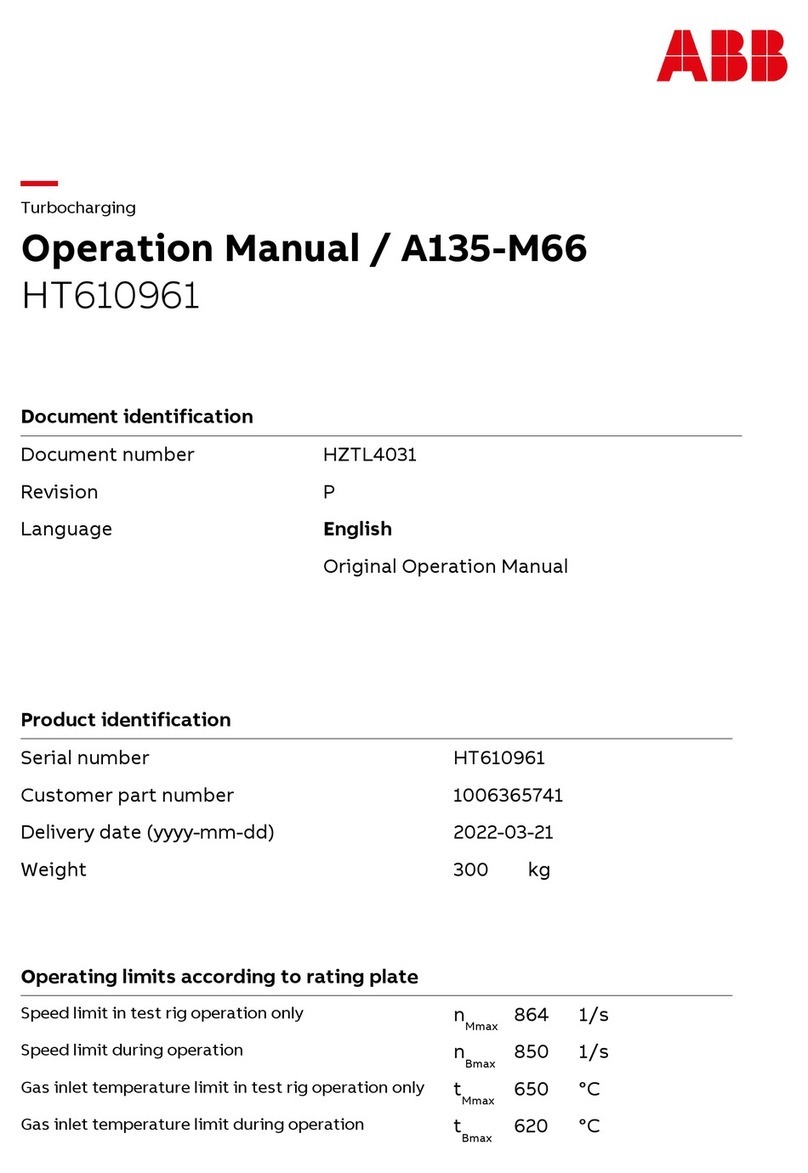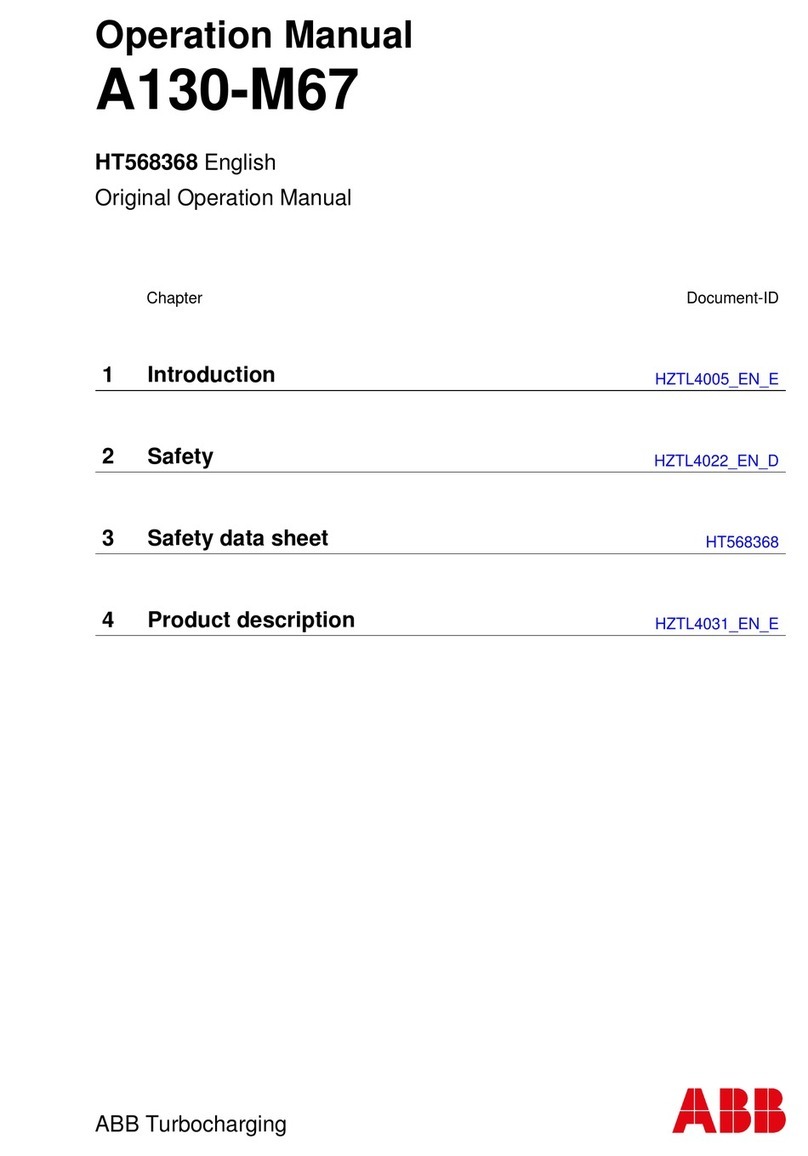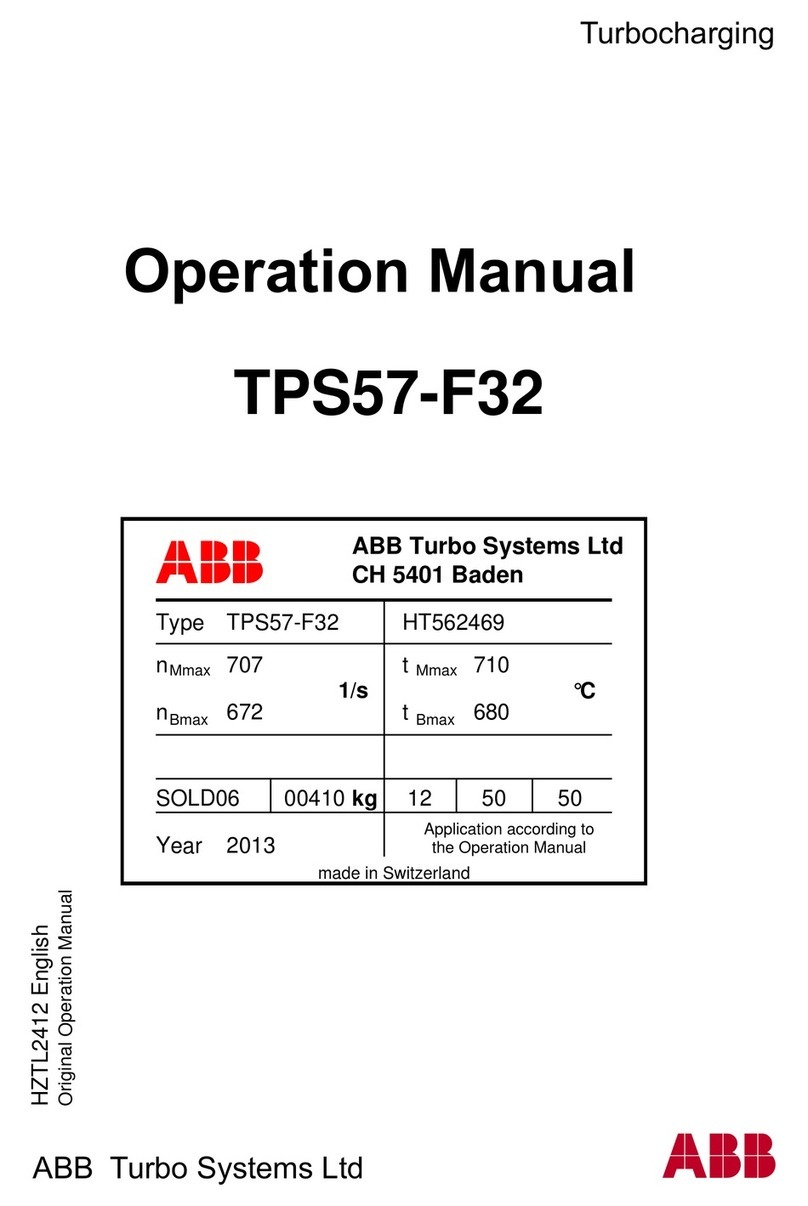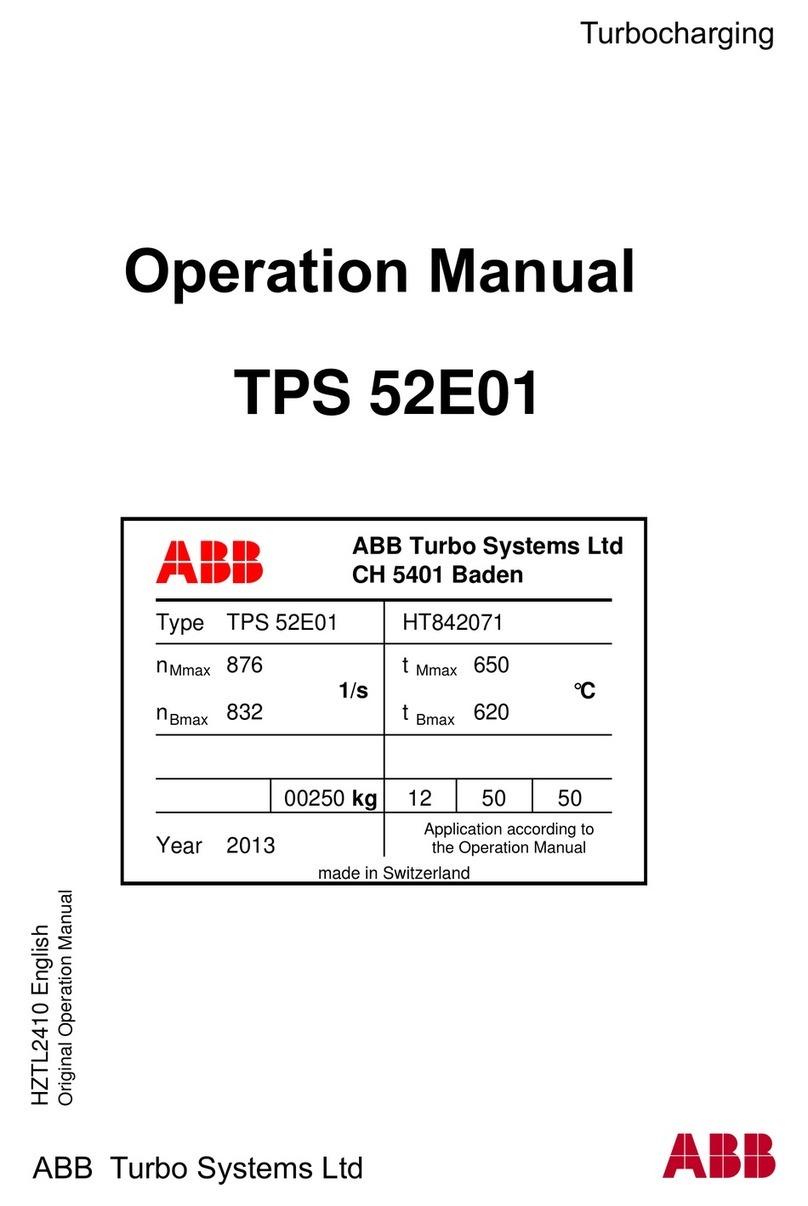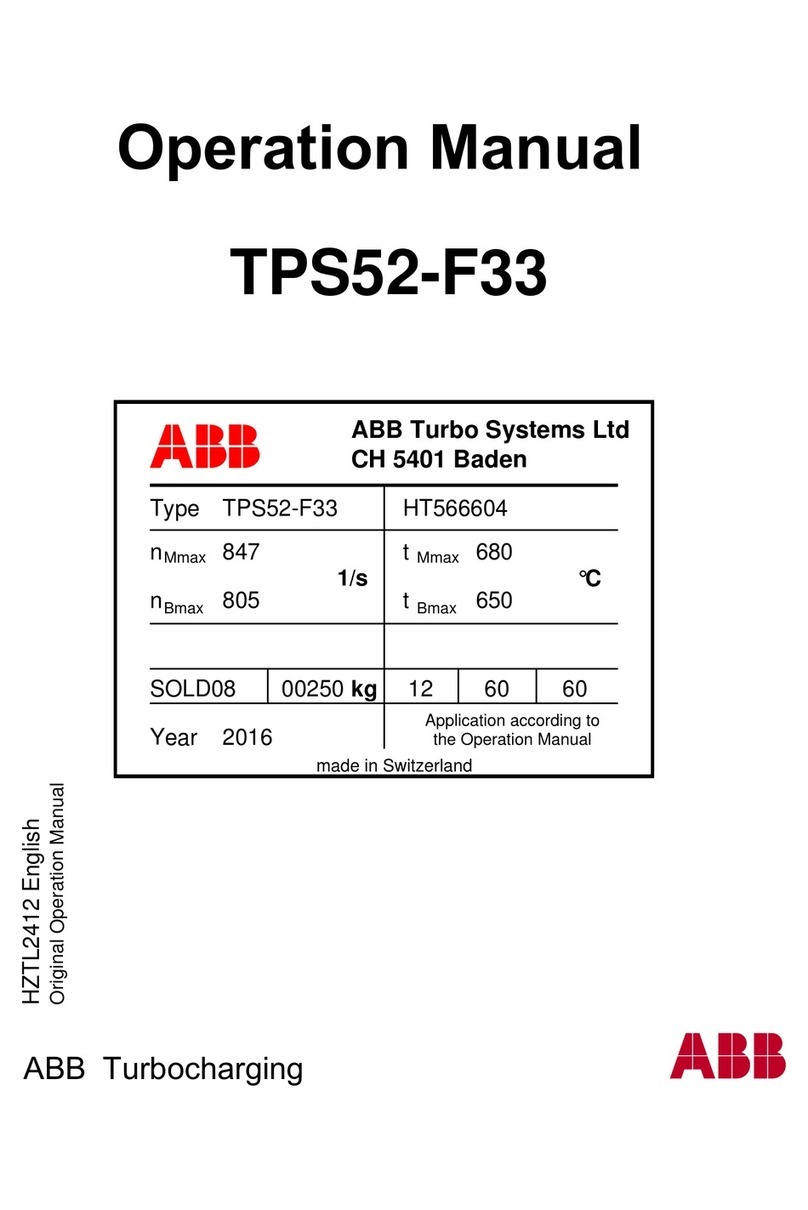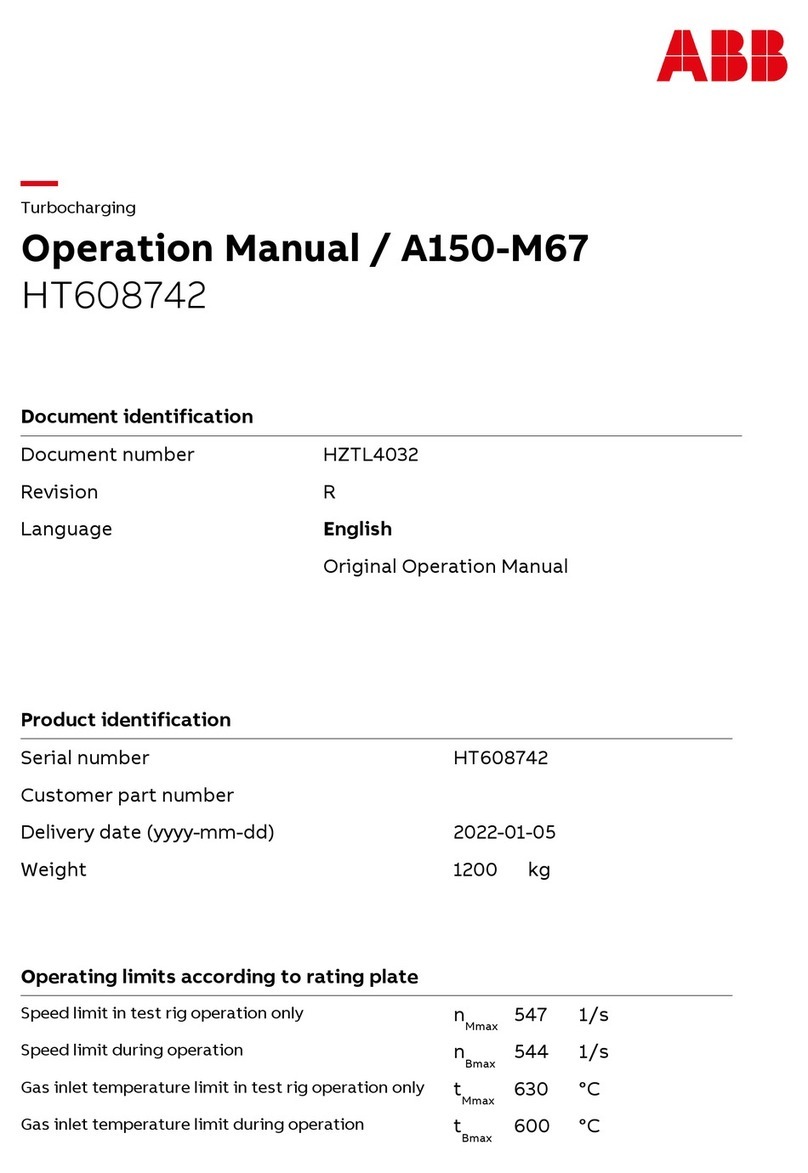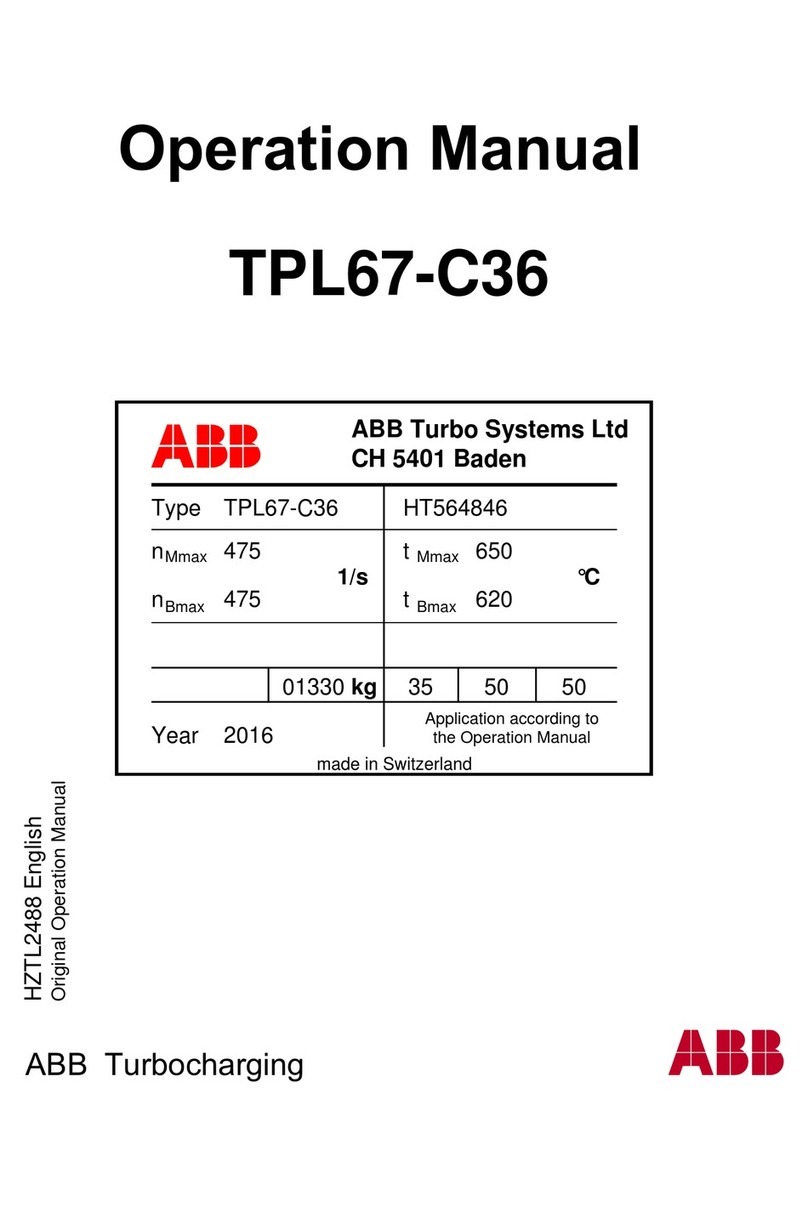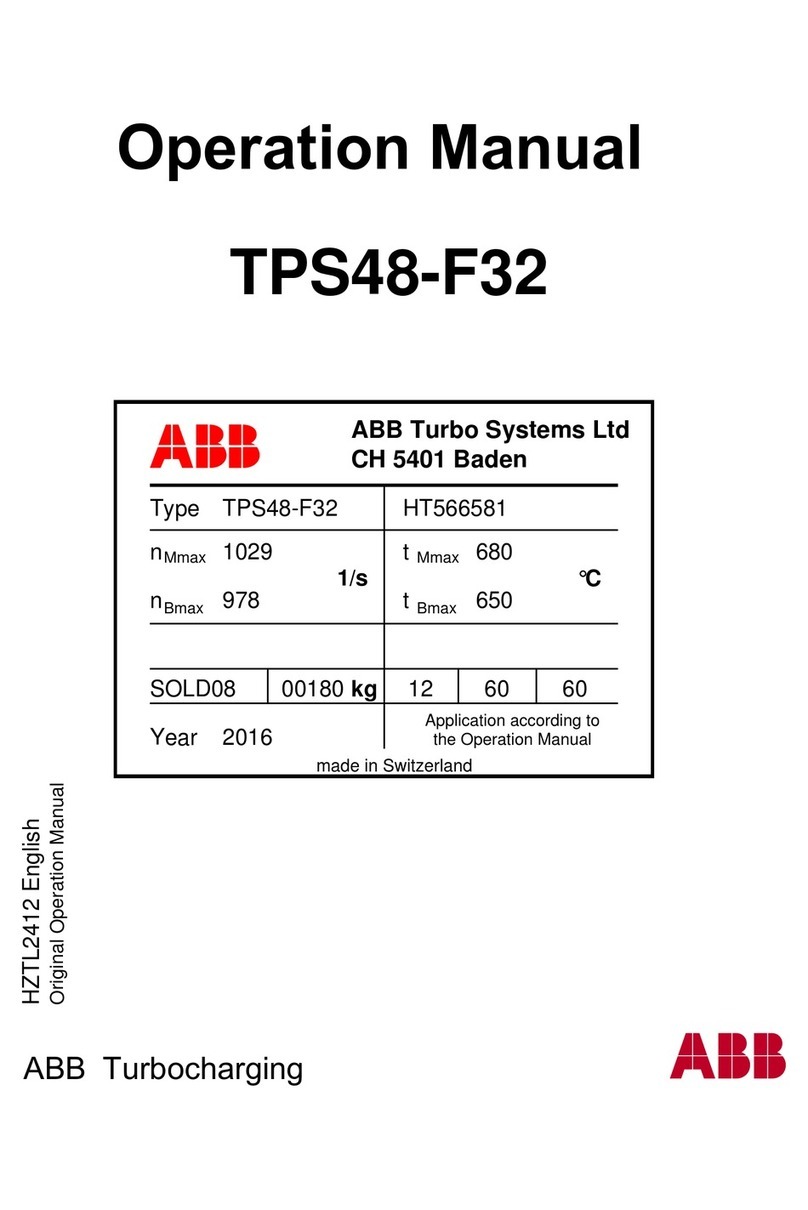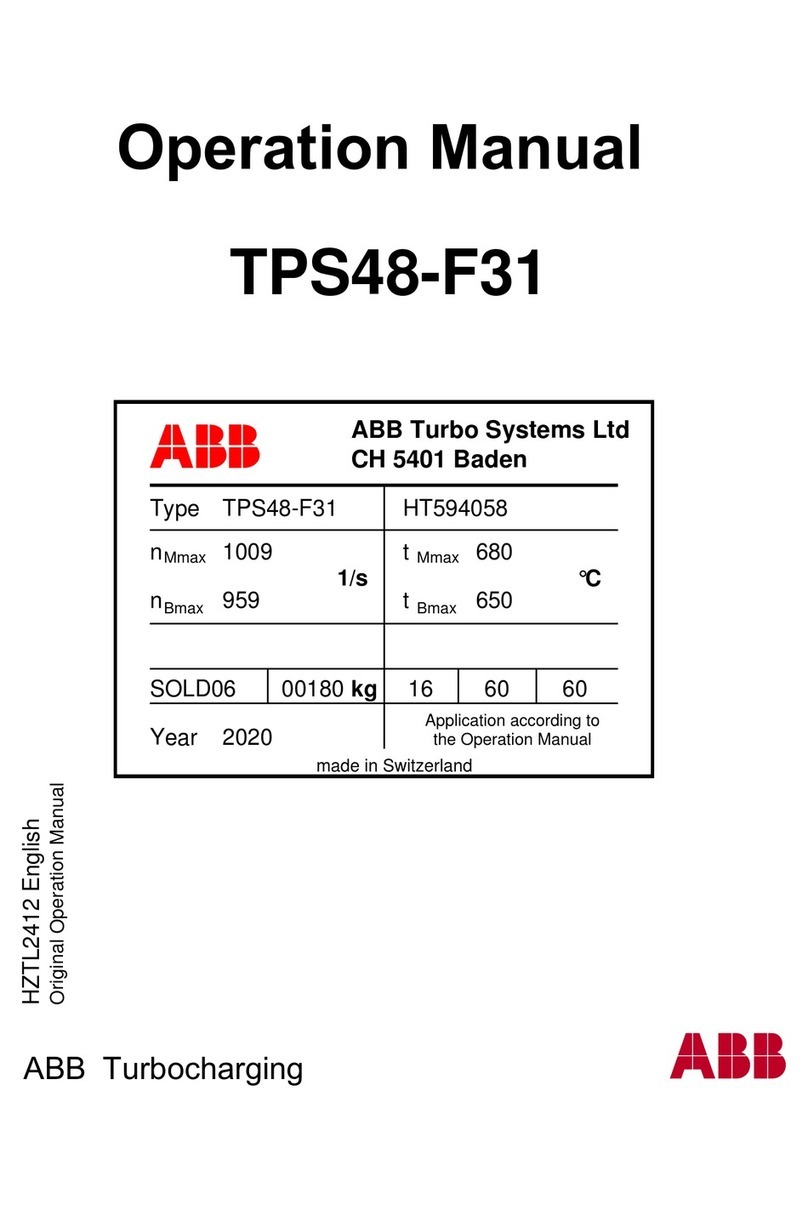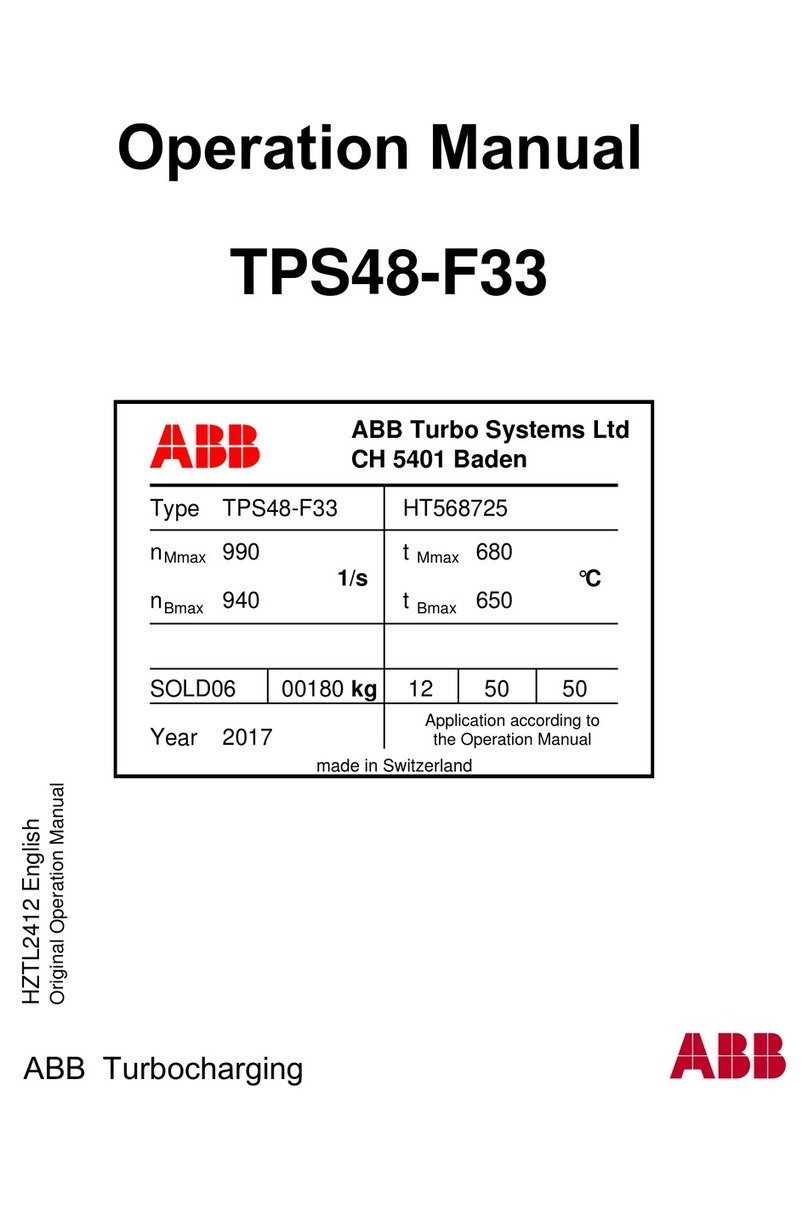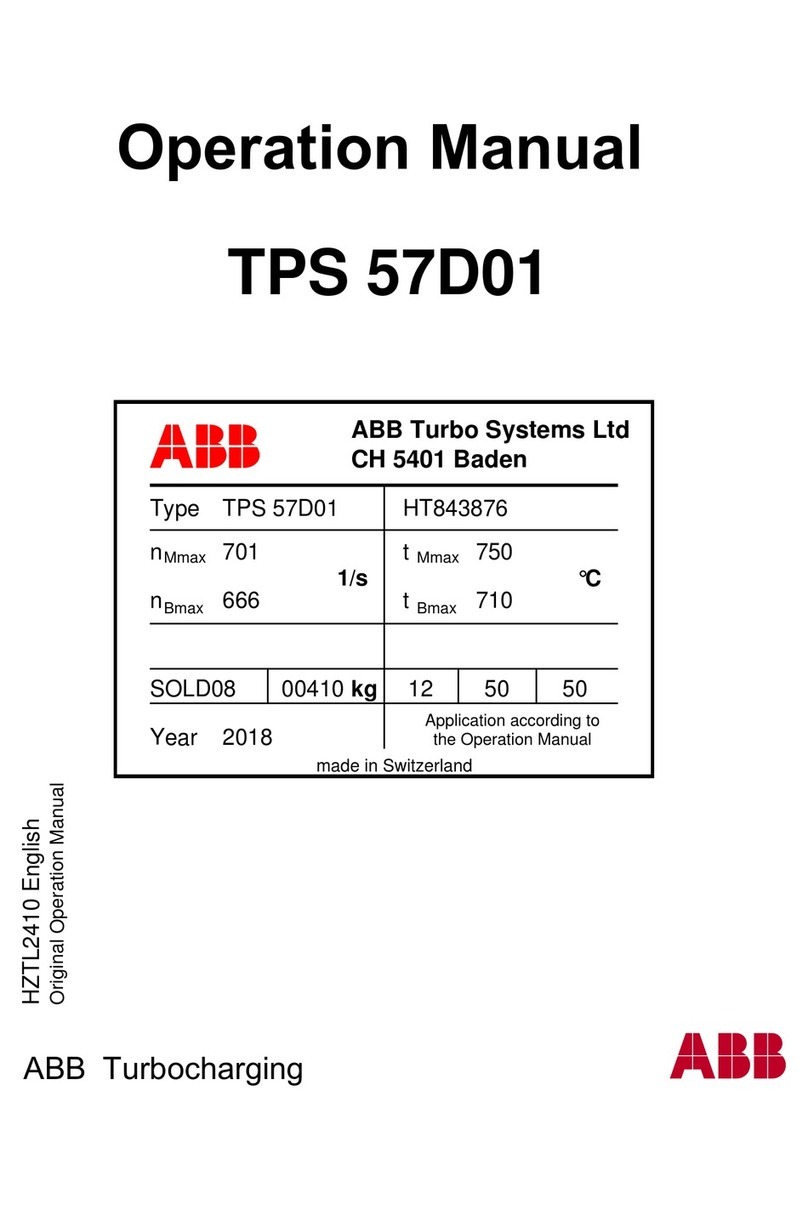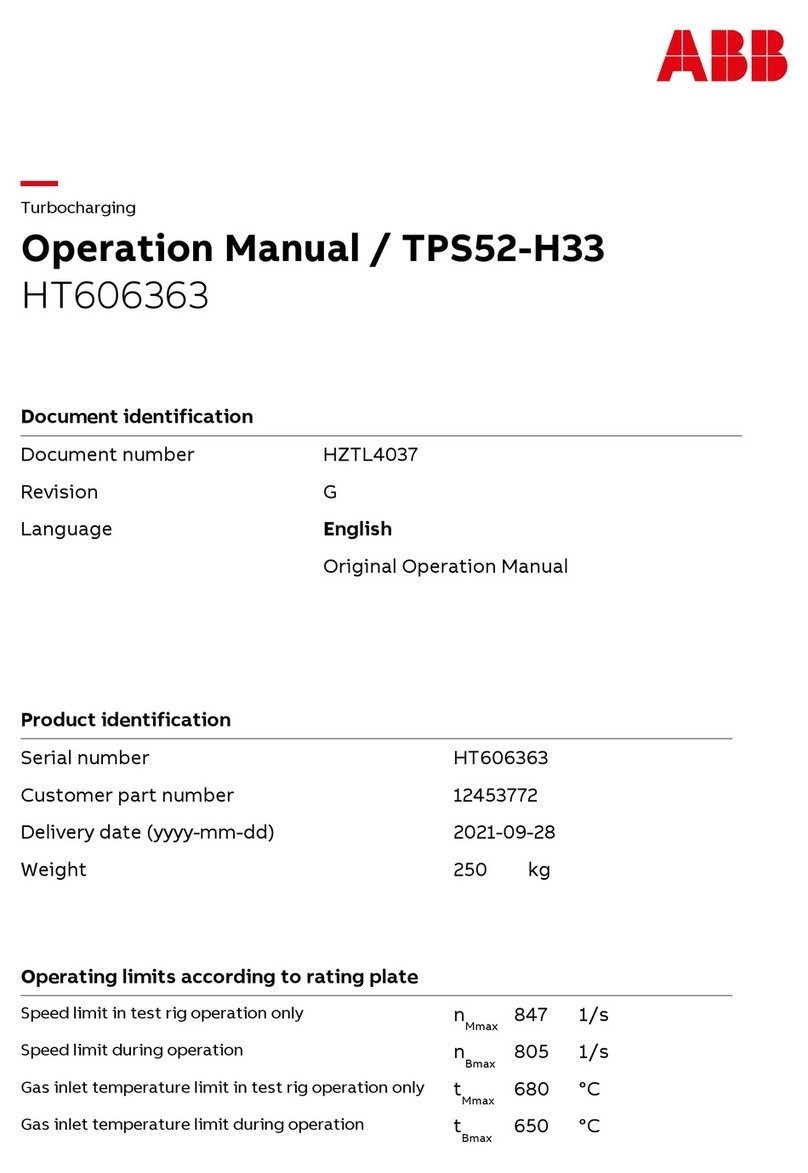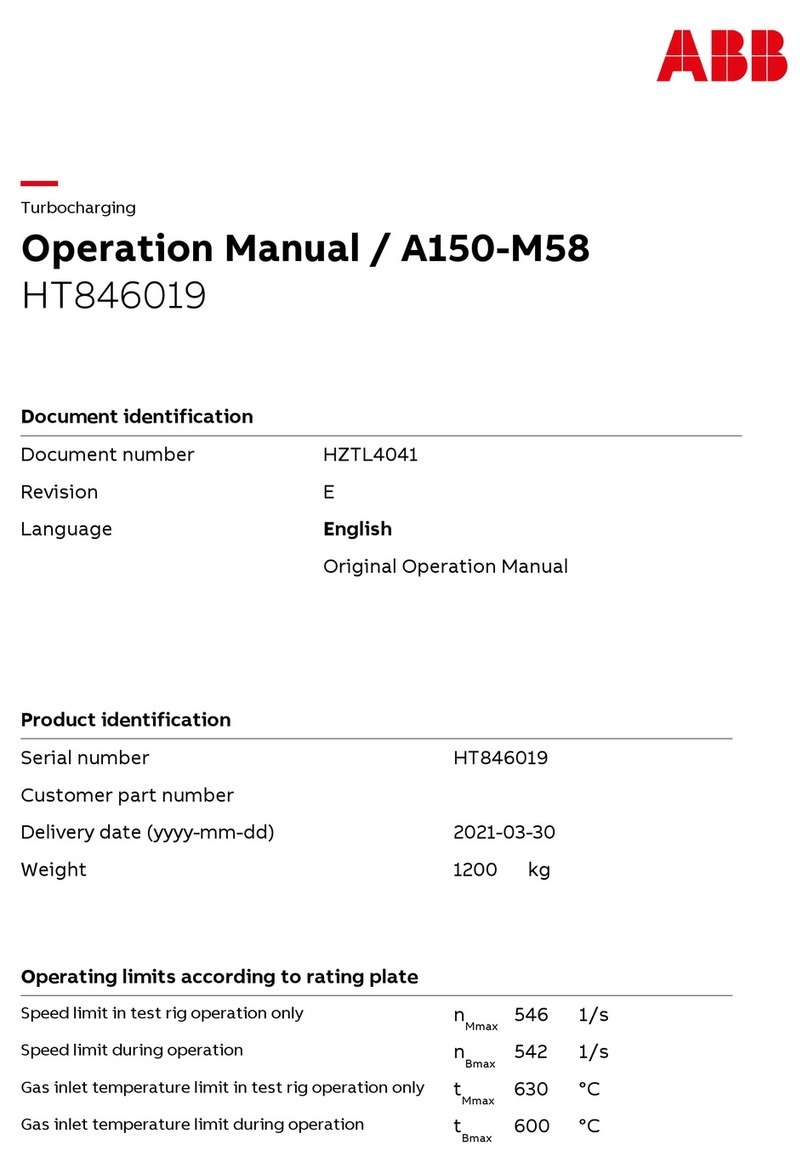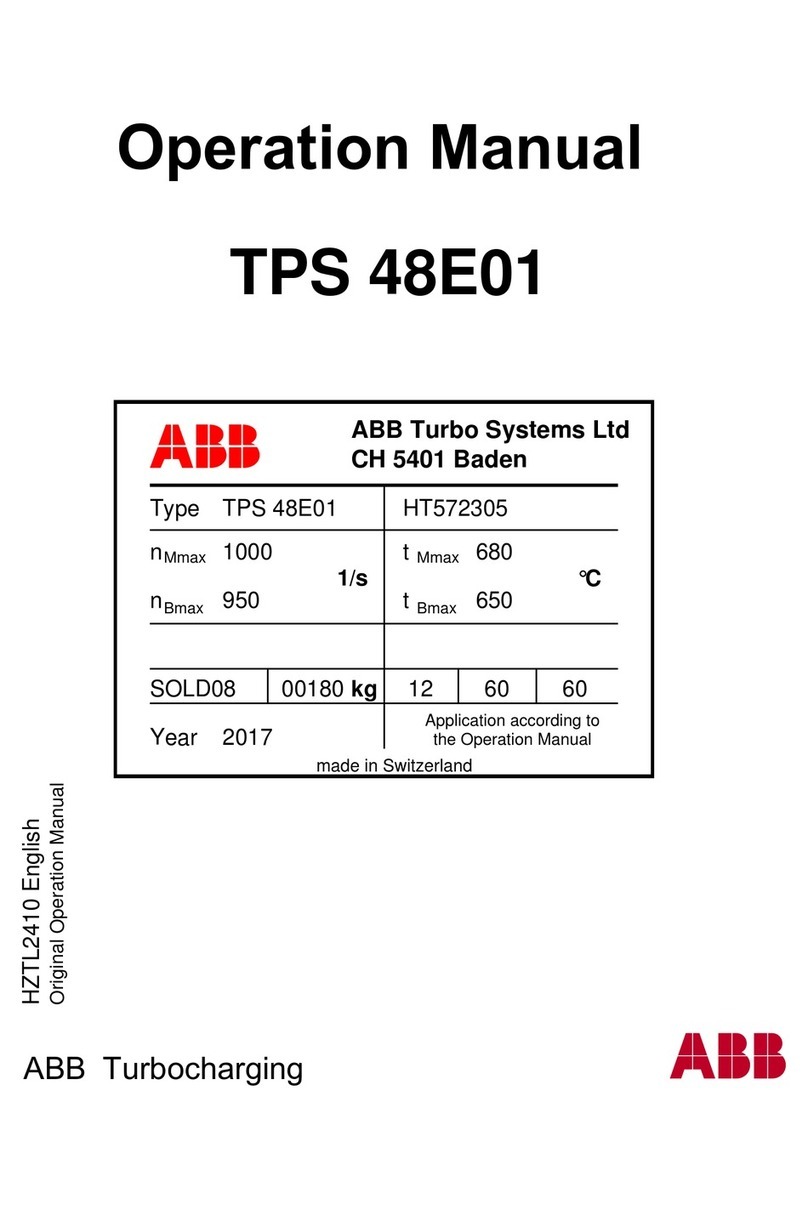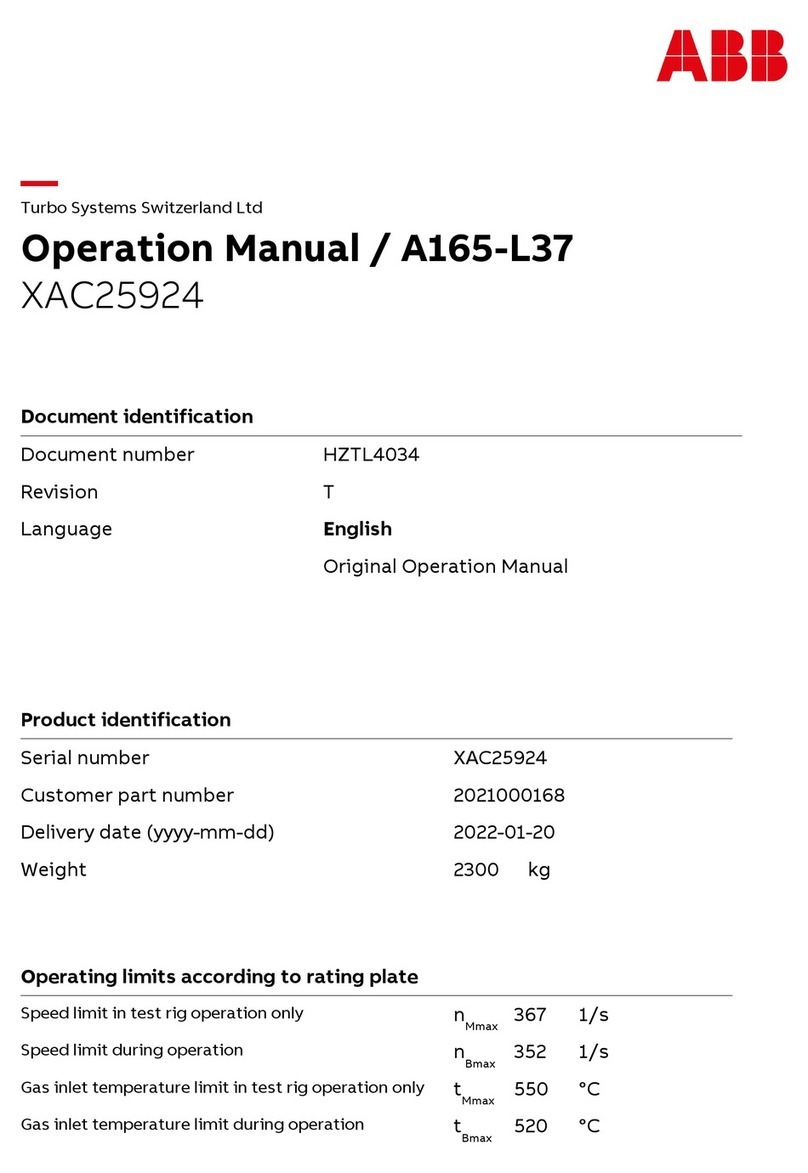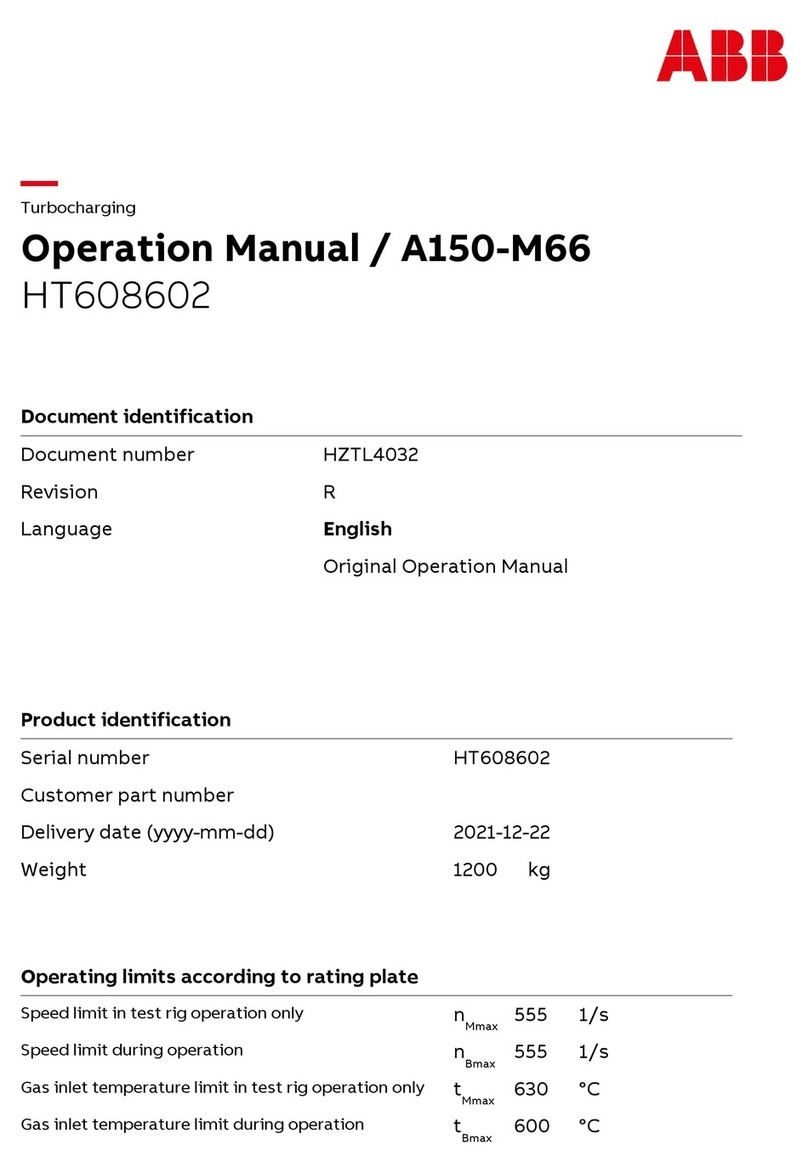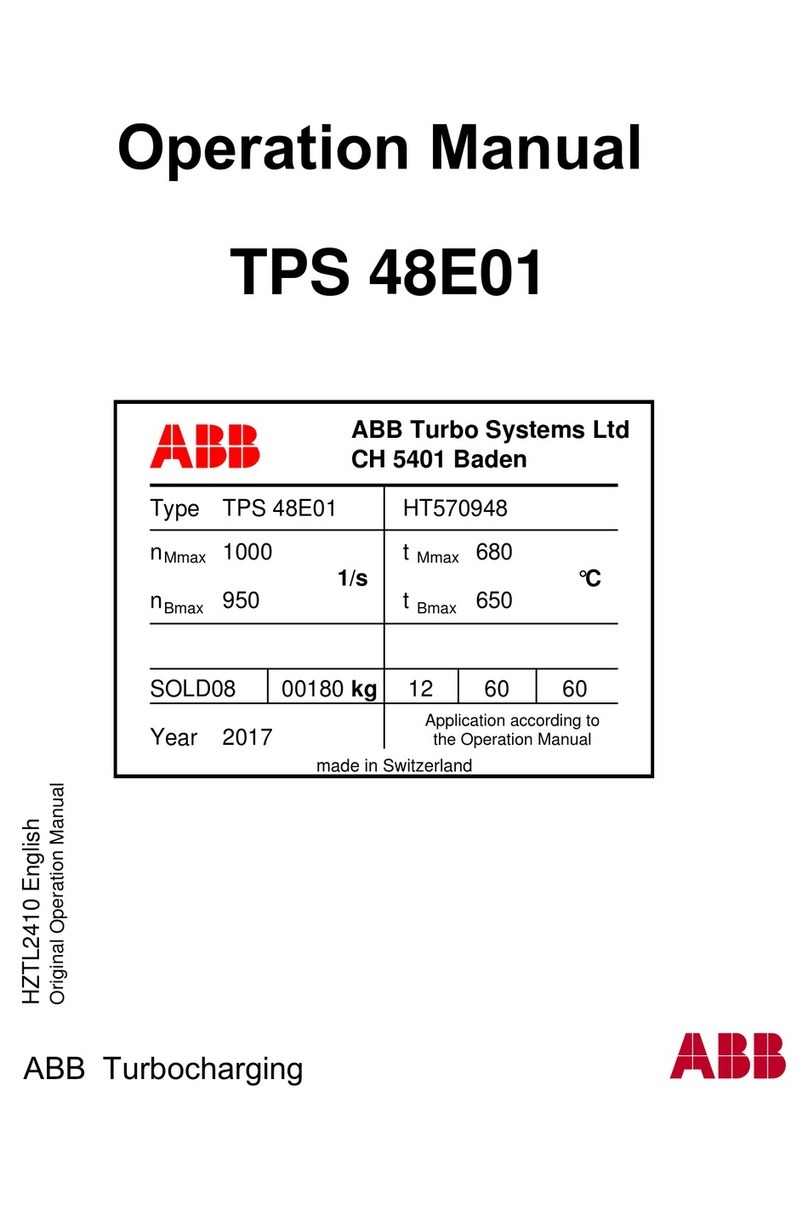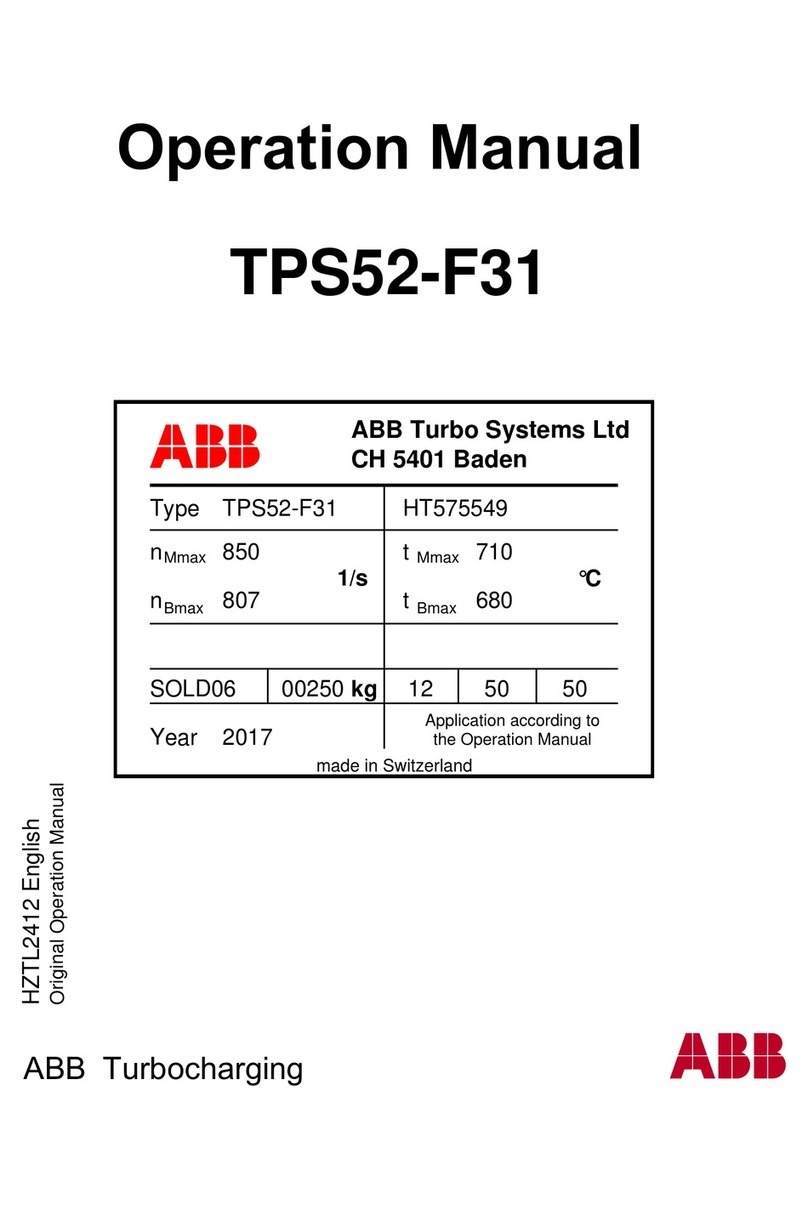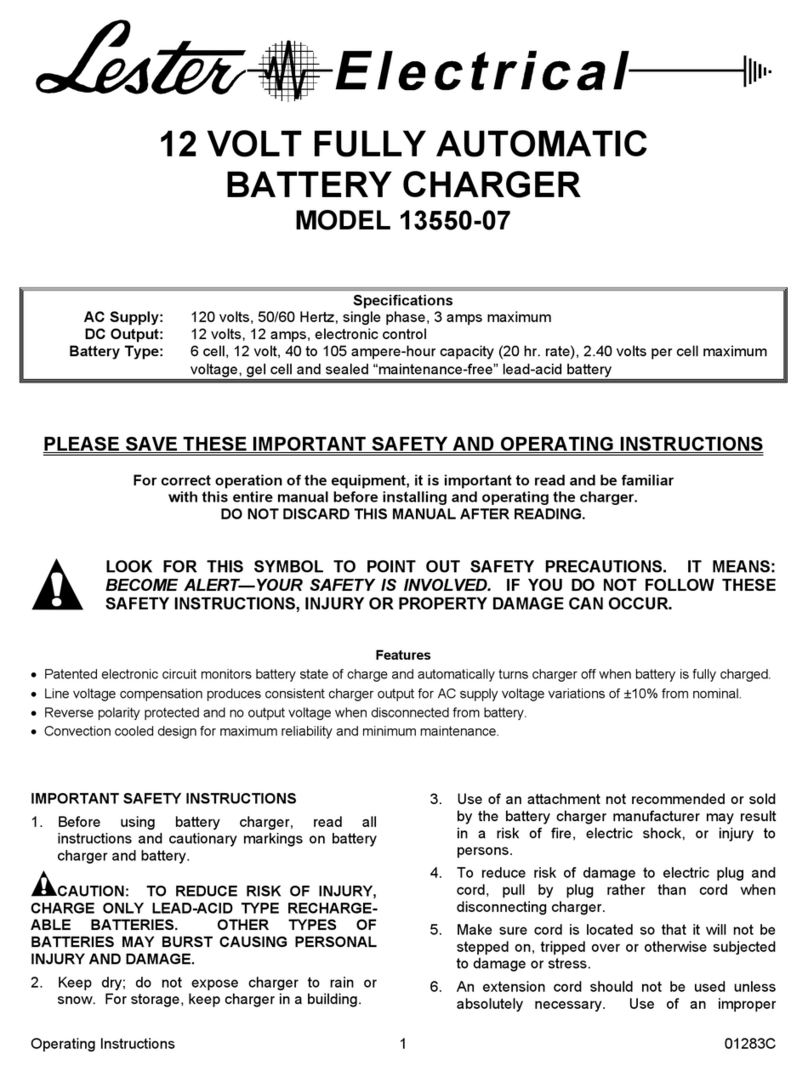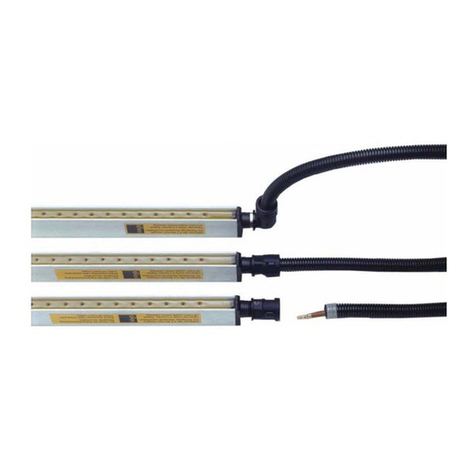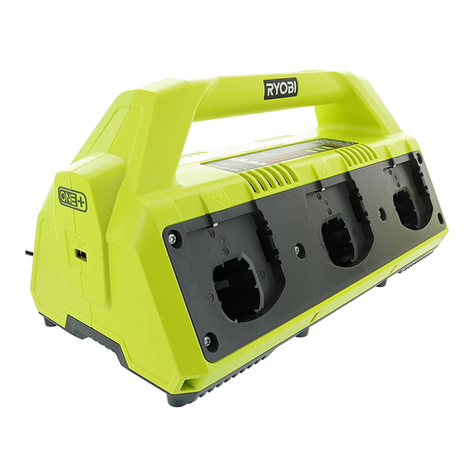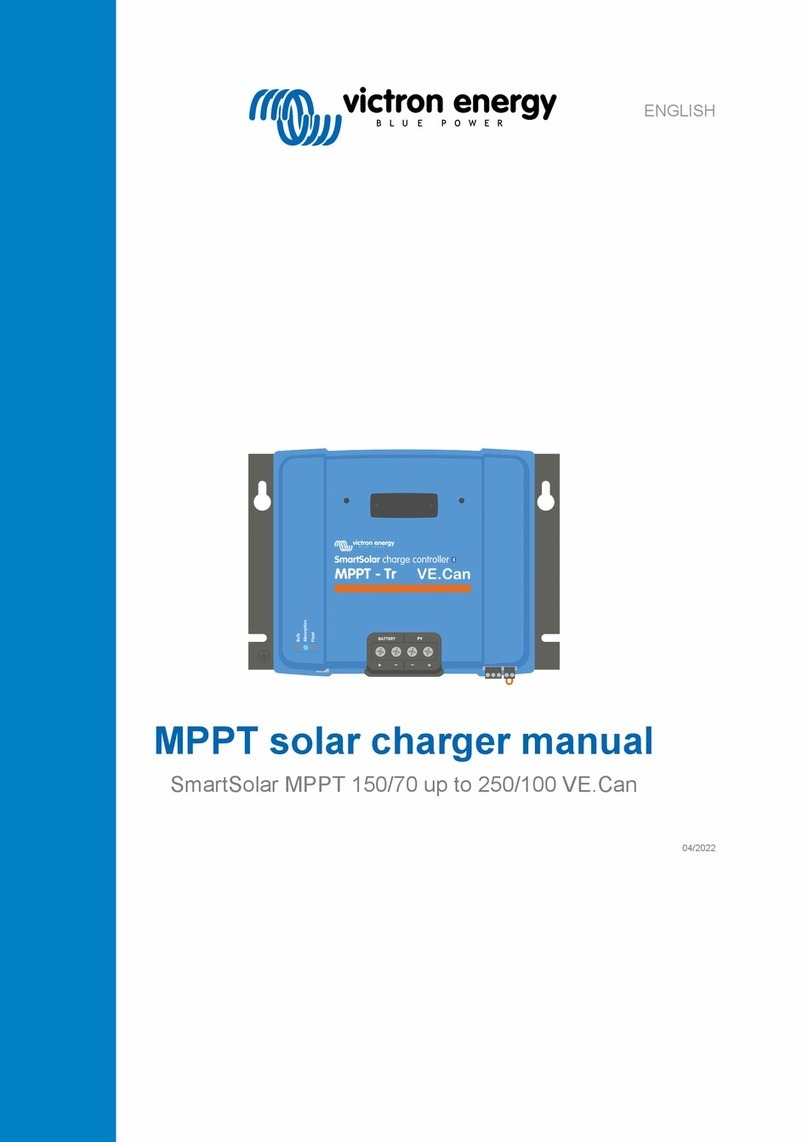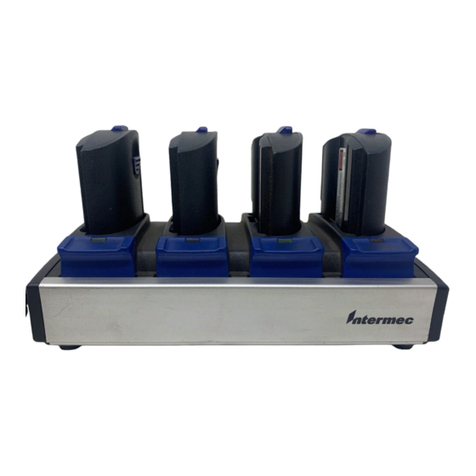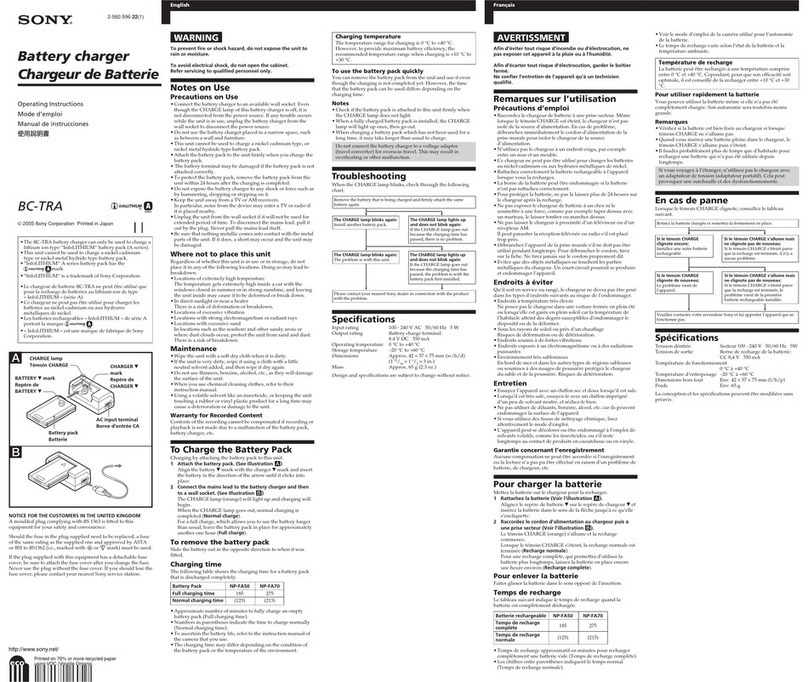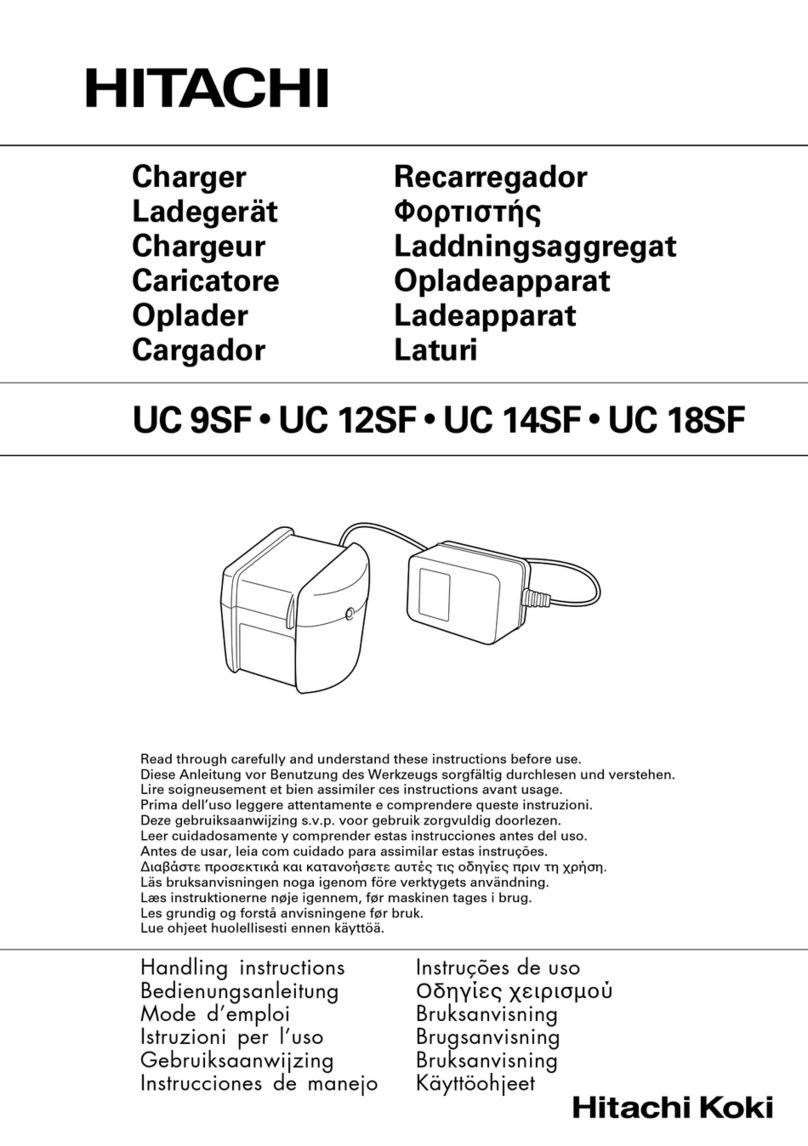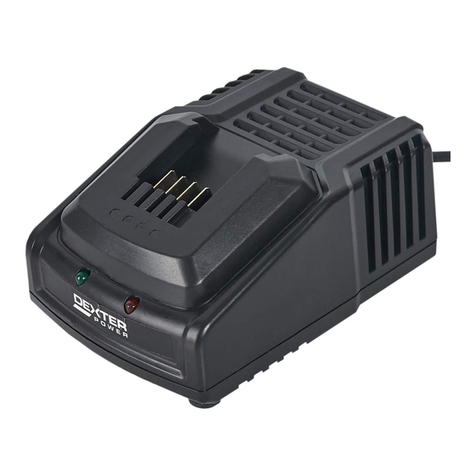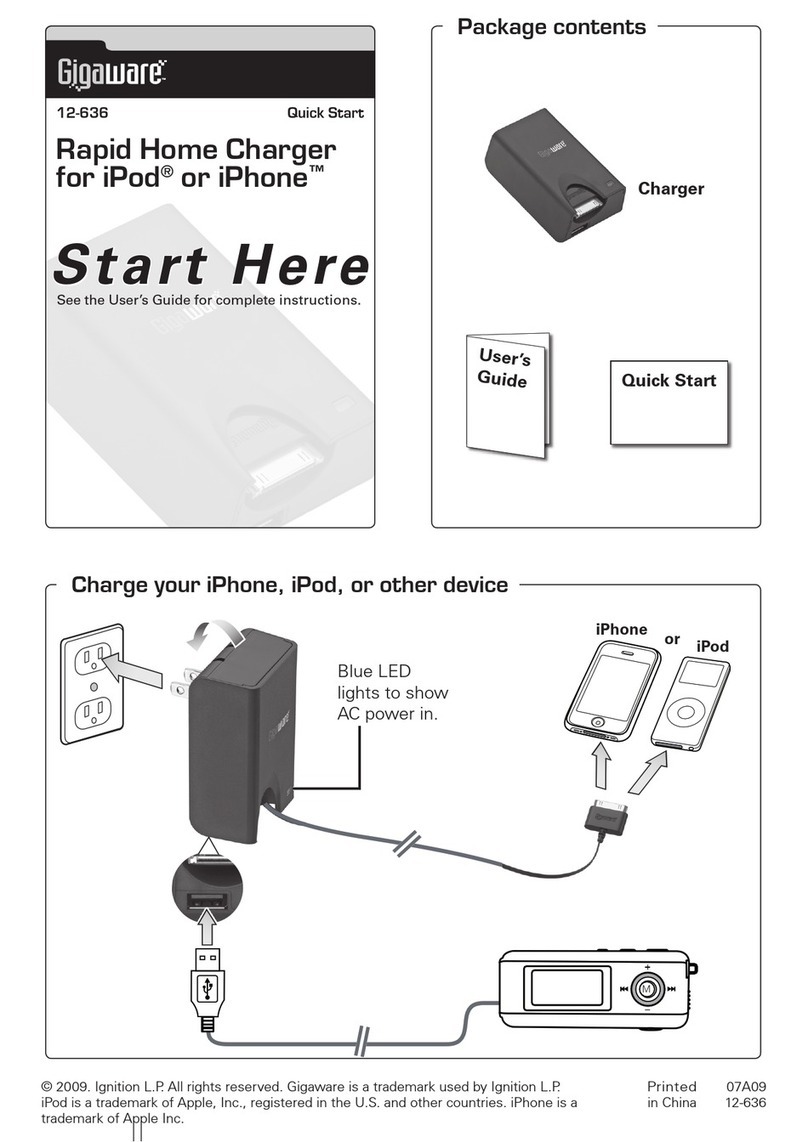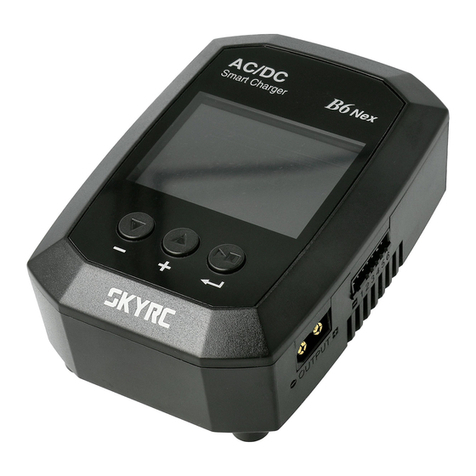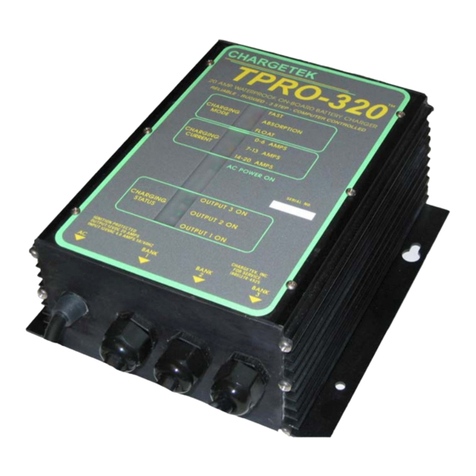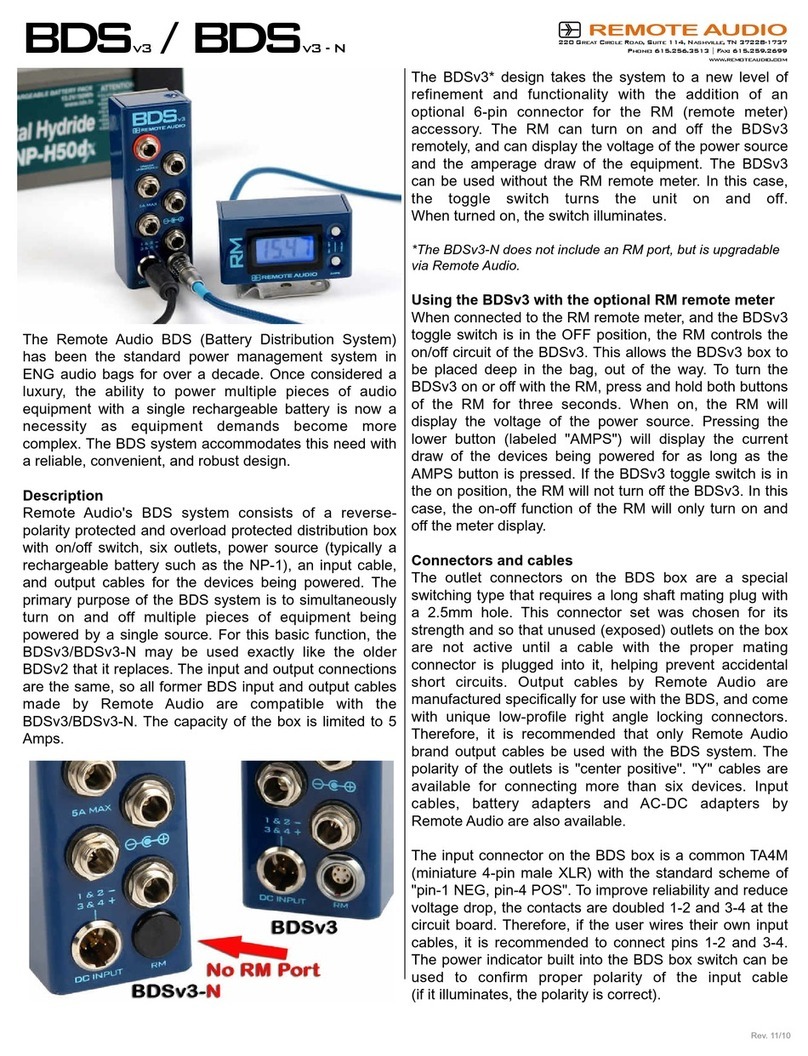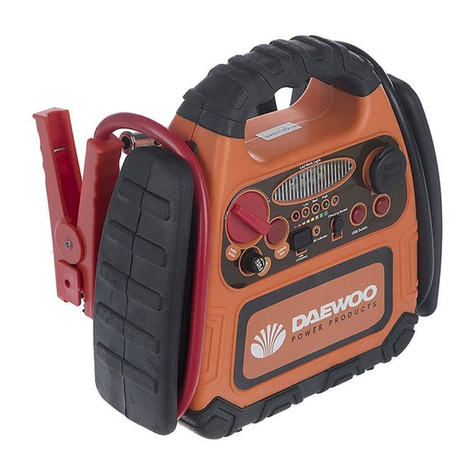ABB HVC-R 100/150 V2 User manual

—
INSTALLATION GUIDE
HVC-R 100/150 V2 E-Bus Charger
Installation Guide for EU products
Version 0.1

HVC-R 100/150 V2E-Bus Charger Installation Guide
Document: v0.1 / Document No.: TBA | Date: XX-08-2021 Page2of 133
Notice
This document contains information about one or more ABB products and may include a
description of or a reference to one or more standards that may be generally relevant to the
ABB products. The presence of any such description of a standard or reference to a standard
is not a representation that all of the ABB products referenced in this document support all of
the features of the described or referenced standard. In order to determine the specific
features supported by a particular ABB product, the reader should consult the product
specifications for the particular ABB product.
ABB may have one or more patents or pending patent applications protecting the intellectual
property in the ABB products described in this document.
The information in this document is subject to change without notice and should not be
construed as a commitment by ABB. ABB assumes no responsibility for any errors that may
appear in this document.
In no event shall ABB be liable for direct,indirect, special,incidental or consequential damages
of any nature or kind arising from the use of this document, nor shall ABB be liable for
incidental or consequential damages arising from use of any software or hardware described
in this document.
This document is originally written in English. Other language versions are a translation of the
original document and ABB cannot be held liable for errors in the translation.
This document and parts thereof must not be reproduced or copied without written permission
from ABB, and the contents thereof must not be imparted to a third party nor used for any
unauthorized purpose.
Copyrights
All rights to copyrights, registered trademarks, and trademarks reside with their respective
Owners.
Copyright © 2021 ABB.
All rights reserved.
Version control
Version
Date
Remarks
V0
.
1
30
-
0
8
-
2021
Released for first review.

HVC-R 100/150 V2E-Bus Charger Installation Guide
Document: v0.1 / Document No.: TBA | Date: XX-08-2021 Page3of 133
Table of Contents
1. Introduction 7
1.1. Preface 7
1.2. Intended document users 7
1.3. Signs 7
1.4. Safety regulations 8
1.4.1. Owner responsibilities 8
1.4.2. Tilting and handling 9
1.4.3. Electric hazards 10
1.4.4. Installation safety 10
1.5. Environment and disposal of waste 11
1.6. Cyber Security Disclaimer 11
1.7. Contact information 12
2. Description of the product 13
2.1. Overview of the system 13
2.1.1. Standard HVC-R 100 V2 E-Bus Charger with one Dual Depot Charge Box 14
2.1.2. Standard HVC-R 100 V2 E-Bus Charger with two or three Dual Depot Charge Boxes 14
2.1.3. Standard HVC-R 150 V2 E-Bus Charger with one Dual Depot Charge Box 14
2.1.4. Standard HVC-R 150 V2 E-Bus Charger with one Dual Depot Charge Box 14
2.1.5. HVC Power Cabinet 15
2.1.6. Dual Depot Charge Box 16
2.2. Accessories 18
2.2.1. Foundation of Power Cabinet 18
2.2.2. Pedestal of the Dual Depot Charge Box 19
2.2.3. Foundation of the pedestal 20
2.2.4. Wall-mounting brackets for Dual Depot Charge Box safe wall fixing 21
2.2.5. Communication ethernet cable 21
3. Preparation 22
3.1. Project planning 22
3.2. About preparation 23
3.3. Required permits 24
3.3.1. Power connection 24
3.3.2. Construction permit 24
3.3.3. Internet access 25
3.4. Adapting the grid 26
3.5. Location 27
3.6. Geometry of infrastructure 28
3.6.1. Space required for the Power Cabinet 28
3.6.2. Placement of multiple Power Cabinets 29
3.6.3. Space required for the Dual Depot Charge Box 30
3.7. Parking space arrangement 31
3.7.1. Cable reach 31
3.7.2. Various alignment possibilities 32
3.8. Electrical installation 33
3.9. Civil installation 35
3.10.Lightning protection 37
4. Construction 38
4.1. About construction 38
4.2. Providing foundation for the Power Cabinet 39
4.2.1. Available options 39

HVC-R 100/150 V2E-Bus Charger Installation Guide
Document: v0.1 / Document No.: TBA | Date: XX-08-2021 Page4of 133
4.2.2. Concrete foundation 40
4.2.3. Metal frame foundation 42
4.2.4. Mounting Power Cabinet directly on a floor 43
4.3. Mounting of the Dual Depot Charge Box 44
4.3.1. Available options 44
4.3.2. Concrete foundation for the pedestal 44
4.3.3. Wall mounting 46
4.4. Cable routing 47
4.4.1. Charge system configuration 47
4.4.2. AC power cable 49
4.4.3. Cables connecting the Power Cabinet and the Dual Depot Charge Box 49
4.4.4. Cables connecting the Dual Depot Charge Boxes 49
4.4.5. Grounding of the Dual Depot Charge Box 50
4.4.6. Optional external interface cables 51
4.4.7. Cable specification list 52
4.5. Internet connection 53
5. Placement and Connection 54
5.1. About placement and connection 54
5.2. Routing the cables 55
5.3. Unpacking Power Cabinet 56
5.3.1. Before unpacking 56
5.3.2. Remove packaging 57
5.4. Moving the Power Cabinet 58
5.4.1. Moving the Power Cabinet with a hoist 59
5.4.2. Moving the Power Cabinet with a forklift truck 60
5.5. Installing the Power Cabinet onto a foundation 61
5.5.1. Connecting Power Cabinet to a foundation 61
5.5.2. Opening the door of the Power Cabinet 63
5.5.3. Loosening the sliding plate of the guidance plates 64
5.5.4. Routing cables through the guidance plates 64
5.5.5. Tightening sliding plates of the guidance plates 65
5.5.6. Installing border covers of the Power Cabinet 66
5.5.7. Installing border covers of the metal frame foundation 67
5.5.8. Installing front cover plate on the foundation 68
5.6. Connecting AC power cables and PE wires to the Power Cabinet 69
5.6.1. Removing the protection covers 69
5.6.2. Connecting the PE wire of the AC power cables 70
5.6.3. Connecting the AC power cables 71
5.6.4. Installing the protection covers 72
5.6.5. Installing lightning protection (optional) 73
5.6.6. Attaching PE wire connecting the Dual Depot Charge Box 74
5.7. Connecting the Power Cabinet’s DC power cables 75
5.7.1. Removing the protection cover 75
5.7.2. Connecting the DC power cables 76
5.7.3. Installing the protection cover 77
5.8. Connecting Interlock cable to the Power Cabinet 78
5.9. Connecting the communication cable to the Power Cabinet 80
5.9.1. Routing the cable to the terminal blocks 80
5.9.2. Connecting the Ethernet cable to the Power Cabinet 81
5.10.Closing the door of the Power Cabinet 82
5.11.Unpacking the Dual Depot Charge Box 83
5.11.1. Before unpacking 83
5.11.2. Removing packaging 83
5.12.Installing the Dual Depot Charge Box onto a Pedestal 84

HVC-R 100/150 V2E-Bus Charger Installation Guide
Document: v0.1 / Document No.: TBA | Date: XX-08-2021 Page5of 133
5.12.1. Connecting the Pedestal to the Foundation 84
5.12.2. Mounting the Dual Depot Charge Box onto the Pedestal 87
5.13.Mounting the Dual Depot Charge Box onto a wall 88
5.13.1. Using the wall-mounting brackets 89
5.14.Cable connections of the Dual Depot Charge Box 91
5.14.1. Gland layout of the Dual Depot Charge Box 91
5.14.2. Opening the door of the Dual Depot Charge Box 92
5.14.3. Removing the protection cover 92
5.14.4. Connect the external PE wire 94
5.14.5. Install lighting protection (optional) 95
5.14.6. Connecting the PE or lighting protection wire onto the pedestal 96
5.14.7. Connecting the DC power in- and output cables 98
5.14.8. Connecting the AC auxiliary power cable 101
5.14.9. Connecting the InterLock cable from the Power Cabinet or the Dual Depot Charge Box 102
5.14.10. Connecting the InterLock cable to the next Dual Depot Charge Box 103
5.14.11. Connecting the communication Ethernet cable (input) 104
5.14.12. Connecting the communication Ethernet cable (output) 105
5.14.13. Connecting external EMO, Beacon and Stop button cables (optional) 106
5.14.14. Installing the protection cover 109
5.14.15. Closing the door of the Dual Depot Charge Box 110
5.14.16. Reattaching rear cover plate of the Pedestal 111
5.14.17. Reattaching front cover plate of the Pedestal 113
6. Commissioning 115
6.1. Commissioning preparation 115
6.2. Customer Acceptance Form (CAF) 116
7. Service and Maintenance 117
7.1. About Service and Maintenance 117
7.2. Cleaning of the cabinet 117
8. Technical specification 119
8.1. Electrical specification od a complete 107 kW system 119
8.2. Electrical specification of a complete 160 kW system 120
8.3. Mechanical data 120
8.4. Environment 121
8.5. Certifications 121
9. Appendices 122
A Dimensions of the Power Cabinet 123
B Dimensions of the Dual Depot Charge Box 125
C Dimensions of the Power Cabinet’s Concrete Foundation 126
D Dimensions of the Power Cabinet’s Metal Foundation 128
E Power Cabinet – Outline with the Foundation 129
F Signal connection diagram 130
G Ground overview of the system 131
H WEEE disposal – 2012-19/EU 132

HVC-R 100/150 V2E-Bus Charger Installation Guide
Document: v0.1 / Document No.: TBA | Date: XX-08-2021 Page6of 133
Glossary
AC
Alternating Current.
CAF
Customer Acceptance Form.
CCS (Combo)
Combined Charging System (also called
Combo) is the charging protocol for North
America and European OEMs.
Contractor
Entity hired by the Owner / site operator to
do engineering, civil and electrical
installation work.
DC
Direct Current.
Grid provider
Company responsible for the
transportation and distributionof electricity.
HMI
Human Machine Interface; the screen on
the charger.
HVC
Heavy Vehicle Charger.
Power Cabinet
Intermediate unit that provides 150 kW of
DC power to the Charge control set. Gets
its power from a power distribution board.
Interlock
The Interlock is an isolated current loop
and is a feature that makes the state of two
mechanisms or functions mutually
dependent.
LAN
A computer network that interconnects
computers systems within a limited area.
NOC
ABB Network Operating Centre; remotely
checks the correct functioning of the
charger.
Owner
The legal Owner of the charger.
PE
Protective Earth.
PPE
PersonalProtective Equipment. Equipment
such as safety shoes, helmet, glasses,
gloves.
RCD
Residual-Current Device.
RFID
Radio-Frequency IDentification. RFID is a
communication technology by means of
radio waves to transfer data over a very
short distance between a reader and an
electronic tag or card.
Site operator
The entity is responsible for the day to day
control of the charger. The site operator
can be the Owner, but not necessarily.
User
The Owner of an electric vehicle, who uses
the Charge Station to charge that vehicle.
WiFi
A technology that allows electronic devices
to connect to a wireless LAN (WLAN)
network.

HVC-R 100/150 V2 E-Bus Charger Installation Guide
Document: v0.1 / Document No.: TBA |Date: XX-08-2021 Page 7of 133
1. Introduction
1.1. Preface
This guide describes the planning and physical installation of the HVC-R 100/150 V2 E-Bus
Charger at its location.
The HVC-R 100/150 V2 E-Bus Charger is a DC fast charger system for hybrid or electrical
buses that can be used for overnight charging which is based on the CCS Charging standard.
It is not permitted to use the HVC-R 100/150 V2 E-Bus Charger to charge any other
equipment, or to use the HVC-R 100/150 V2 E-Bus Charger for any other purposes.
The HVC-R 100/150 V2 E-Bus Charger uses high-amperage electric currents. Therefore, the
installation must be planned carefully and must be done by certified personnel only (according
to local standards1).
Before installing the HVC-R 100/150 V2 E-Bus Charger, read this Installation Guide
carefully and attentively. Follow the instructions presented in the Installation Guide.
ABB is not responsible for any damage that could be caused by not or incorrectly
following and executing the instruction described in this manual.
1.2. Intended document users
This document is intended to be used by:
Customers who purchased an HVC-R 100/150 V2 E-Bus Charger or currently are in
the process of ordering and wish to know installation details.
Contractors who are responsible for site preparation and/or installation of the HVC-R
100/150 V2 E-Bus Charger.
1.3. Signs
The following signs are used on the equipment and in this manual:
DANGER
Hazardous voltage
Identifies a hazard that could result in severe injury or death by
electrocution.
WARNING
Various
Identifies a hazard that could result in severe injury or death.
WARNING
Rotating parts
Identifies a hazard that could result in injury due to the presence of
rotating or moving parts.
1Local regulations shall take precedence if they list different installation requirements than prescribed in this Installation
Manual.

HVC-R 100/150 V2 E-Bus Charger Installation Guide
Document: v0.1 / Document No.: TBA |Date: XX-08-2021 Page 8of 133
WARNING
Pinch Hazard
Identifies a hazard that could result in injuries including the cases in which
some body parts may be pinched or crushed.
WARNING
Fall Hazard
Identifies a hazard that could result in injury due to unsafe work at height.
CAUTION
Various
Identifies a hazard that could result in damage to the machine, other
equipment, and/or environmental pollution.
CAUTION
Environmental damage
Identifies special indications as well as biddings andprohibitions to avoid
damage to the environment. This sign refers to present national
regulations concerning the environment.
NOTICE
Contains remarks, suggestions or advice.
1.4. Safety regulations
1.4.1. Owner responsibilities
The Owner and site operator are required:
To operate the charge station with the protective devices installed and to make sure
all protective devices are correctly installed after carrying out installation or
maintenance.
To prepare a plan containing instructions on actions to be taken in case of an
emergency.
To prepare the site where the charge station will be installed according to the
requirements described in this guide.
To make sure that there is enough space around the charger to carry out maintenance
work.
To appoint a person responsible for the safe operation of the charge station and for
the coordination of all works.
All works have to be carried out by qualified personnel.All qualified personnel have to
estimate their designated works in order to identify and avoid hazards. They must
possess experience and adequate knowledge of: safety regulations and labor medical
regulations, accident prevention regulations, guidelines and approved safety
regulations, and special instructions concerning possible occurrence of dangers.

HVC-R 100/150 V2 E-Bus Charger Installation Guide
Document: v0.1 / Document No.: TBA |Date: XX-08-2021 Page 9of 133
You are not allowed to modify the charge system without the permission of ABB. The
Owner is cautioned that changes or modifications not expressly approved by ABB
could void the Owner’s authority to operate the equipment and ABB’s warranty policy.
Neither ABB nor its affiliates shall be liable to the purchaser of this product or third
parties for damages, losses, costs or expenses borne by the Purchaser or third parties
as a result of: an accident, misuse or abuse of the product or unauthorized
modifications, repairs or alterations to the product, or failure to strictly comply to the
ABB operating and maintenance instructions.
1.4.2. Tilting and handling
CAUTION
Heavy equipment
Handling instructions:
1. Use crane or forklift truck when lifting or moving the Power Cabinet.
2. Do not drop parts of the HVC-R 100/150 V2 E-Bus Charger.
3. Do not exceed the tilting angle of 30⁰while moving or performing
works on the Power Cabinet.
4. Read and follow the ABB Guidance on the requirements for safe
operation of mobile cranes (ML-03, 9Akk104941D0113).
WARNING
Personal safety (PPE)
Always wear a safety helmet, safety gloves and safety shoes when you
perform the work that involves lifting and tilting the equipment.
WARNING
Make sure that personnel cannot be crushed or become trapped during
lifting and tilting work.
Lifting activities
It is a legal requirement that all activities involving lifting equipment are planned and that they
are conducted under effective supervision and managed based on the risk, complexity of the
activity and the work environment (EU directive 2009/104/EEG, appendix II, chapter 3.2.5).
It is of great importance, regardless of location, that any lifting activity is performed safely
(refer to the guide below).
It must be carried out within the framework of an effective management system;
It must be properly planned;
Its risks have to be assessed;
Supervision must be performed over it;
It must be performed by skilled personnel and with the appropriate means.
All lifting activities must be performed under the ABB Guidance on the requirements for safe
operation of mobile cranes (ML-03, 9Akk104941D0113).
When applying this Standard, local laws and regulations must be taken into account at all
times. In the event of conflicts, local laws and regulations prevail over this Standard.

HVC-R 100/150 V2 E-Bus Charger Installation Guide
Document: v0.1 / Document No.: TBA |Date: XX-08-2021 Page 10 of 133
1.4.3. Electric hazards
DANGER
Hazardous voltage
The HVC-R 100/150 V2 E-Bus Charger conductors under hazardous
electrical voltages. The grid terminals on the internal DIN rail may carry
hazardous voltages, even if all circuit breakers are switched off.
1.4.4. Installation safety
WARNING
Personal safety (PPE)
Always wear a safety helmet, safety gloves and safety shoes when you
do the lifting and tilting work.
WARNING
Visually examine the package fordamage. See section Beforeunpacking
on Page 56 and section Before unpacking on Page 83. If there is
damage, do not install the system.
DANGER
Hazardous voltage
Instructions:
1. Always switch off the external group switch and the main switch in
the cabinet, before performing any installation, disassembly, repair
or replacement of components.
2. Do a voltage check and make sure that the electrical power is
disconnected from the system.
3. Only ABB certified technicians are permitted to commission the
HVC-R 100/150 V2 E-Bus Charger.
4. When the system is in an open or dangerous state, do not allow
unqualified personnel near it. Instruct and warn people in the vicinity
about the potential harmful high voltages.
5. The installation and maintenance personnel must be supplied with
their own lighting equipment, since the HVC-R 100/150 V2 E-Bus
Charger has no lights inside the cabinet.
6. Always connect the Protective Earth (PE) first, before connecting the
neutral (N) and Phase (P) wiring.
7. Correctly lock the door after completing installation or service
operations.
WARNING
Make sure that there is a minimum free space of 1000 mm in front of the
door of the Power Cabinet. The minimum space is necessary to allow
service personnel to quickly move away from the Power Cabinet in case
of an emergency while the door remains open.

HVC-R 100/150 V2 E-Bus Charger Installation Guide
Document: v0.1 / Document No.: TBA |Date: XX-08-2021 Page 11 of 133
WARNING
Make sure that there is a minimum free space of 1000 mm in front of the
door of the Dual Depot Charge Box. The minimum space is necessary to
allow service personnel to quickly move away from the Dual Depot
Charge Box if there is an emergency when the door is open.
CAUTION
Warranty
Installation and commissioning work must be carried out by certified
personnel. The warranty will be void if any work is carried out by non-
certified personnel.
1.5. Environment and disposal of waste
CAUTION
Always refer to the local rules and regulations on processing
(non-reusable) parts of the HVC-R 100/150 V2 E-Bus Charger.
1.6. Cyber Security Disclaimer
This product is designed to be connected to and to exchange information and data via a
network interface. It is customer's sole responsibility to provide and continuously ensure a
secure connection between the product and customer network or any other network (as the
case may be). Customer shall establish and maintain any appropriate measures (such as,but
not limited to, the installation of firewalls, application of authentication measures, encryption
of data, installation of anti-virus programs, etc.) to protect the product, the network, its system
and the interface against any kind of security breaches, unauthorized access, interference,
intrusion, leakage and/or theft of data or information.
ABB Ltd and its affiliates are not liable for damages and/or losses related to such security
breaches, any unauthorized access, interference, intrusion, leakage and/or theft of data or
information.

HVC-R 100/150 V2E-Bus Charger Installation Guide
Document: v0.1 / Document No.: TBA | Date: XX-08-2021 Page12 of 133
1.7. Contact information
ABB in your country
Please contact ABB in your country for delivery and service information.
ABB EV Infrastructure global
ABB EV Infrastructure
Address Heertjeslaan 6
2629 JG Delft
The Netherlands
Telephone +31 88 440 46 00
Mail info.evi@nl.abb.com
Write down here your local ABB contact details:

HVC-R 100/150 V2E-Bus Charger Installation Guide
Document: v0.1 / Document No.: TBA | Date: XX-08-2021 Page13 of 133
2. Description of the product
2.1. Overview of the system
Example of a complete installation
ALow voltage power distribution cabinet provided by the Owner
BPower Cabinet – 107 or 160 kW (HVC-R 100/150 V2)
CDual Depot Charge Box (up to 3 per Power Cabinet)
DCables connecting Power Cabinet and Dual Depot Charge Box inside cable conduits
EElectric hybrid and/or full electric Bus
FParking space designated for Bus charging
The HVC-R 100/150 V2 E-Bus Charger consists of multiple components and it may require
additional elements depending on the project’s circumstances and location of installation
which dictates whether these elements are needed.
ABB offers four standard delivery system configurations:
1. Standard HVC-R 100 V2 E-Bus Charger with one Dual Depot Charge Box.
2. Standard HVC-R 100 V2 E-Bus Charger with two or three Dual Depot Charge Boxes.
3. Standard HVC-R 150 V2 E-Bus Charger with one Dual Depot Charge Box.
4. Standard HVC-R 150 V2 E-Bus Charger with two or three Dual Depot Charge Boxes.
If necessary, additional components can be ordered separately and are not part of the
standard delivery. See section Accessories on Page 18.

HVC-R 100/150 V2E-Bus Charger Installation Guide
Document: v0.1 / Document No.: TBA | Date: XX-08-2021 Page14 of 133
2.1.1. Standard HVC-R 100 V2 E-Bus Charger with one Dual Depot Charge Box
The following parts are provided for this system configuration:
1x HVC-R 100 V2 Power Cabinet
(ABB6AGC102603/ABB6AGC103332/ABB6AGC103337/ ABB6AGC103341)
1x Dual Depot Charge Box (ABB6AGC102131)
2.1.2. Standard HVC-R 100 V2 E-Bus Charger with two or three Dual Depot
Charge Boxes
1x HVC-R 100 V2 Power Cabinet
(ABB6AGC102603/ABB6AGC103332/ABB6AGC103337/ ABB6AGC103341)
2x or 3x Dual Depot Charge Box (ABB6AGC102131)
2.1.3. Standard HVC-R 150 V2 E-Bus Charger with one Dual Depot Charge Box
The following parts are provided for this system configuration:
1x HVC-R 150 V2 Power Cabinet
(ABB6AGC102602/ ABB6AGC103333/ ABB6AGC103338/ ABB6AGC103342)
1x Dual Depot Charge Box (ABB6AGC102131)
2.1.4. Standard HVC-R 150 V2 E-Bus Charger with one Dual Depot Charge Box
The following parts are provided for this system configuration:
1x HVC-R 150 V2 Power Cabinet
(ABB6AGC102602/ ABB6AGC103333/ ABB6AGC103338/ ABB6AGC103342)
2x or 3x Dual Depot Charge Box (ABB6AGC102131)

HVC-R 100/150 V2E-Bus Charger Installation Guide
Document: v0.1 / Document No.: TBA | Date: XX-08-2021 Page15 of 133
2.1.5. HVC Power Cabinet
Outside view of the HVC 1002/150 V2 Power Cabinet
Overview of the closed Power Cabinet
A Base cover D 3G Antenna
B Air outlet E Air inlets (also on the left and back side)
C Door F Door handle / lock
Inside view of the HVC 100/150 V2 Power Cabinet
Overview of the open Power Cabinet
A Main switch D Data/communication connection
B AC Power connection E Display
C Guidance plate of the cables F Power Modules (only two are
installed in the HVC 100)
2Two 50 kW Power Modules installed in the cabinet instead of three.

HVC-R 100/150 V2E-Bus Charger Installation Guide
Document: v0.1 / Document No.: TBA | Date: XX-08-2021 Page16 of 133
2.1.6. Dual Depot Charge Box
Outside view of the Dual Depot Charge Box
A Charge state indicator light 1 (beacon) G Hanging bracket for charge cable 2
B Door H CCS DC plug and cable 2
C Stop button 1 I Stop button 2
D Emergency stop button (EMO) J Lock and door handle
E CSS DC plug and cable 1 K Charge state indicator light 2 (beacon)
F Hanging bracket for charge cable 1

HVC-R 100/150 V2E-Bus Charger Installation Guide
Document: v0.1 / Document No.: TBA | Date: XX-08-2021 Page17 of 133
Inside view of the Dual Depot Charge Box
A Communication connection
B Connection block
C Protection cover for DC contactors

HVC-R 100/150 V2E-Bus Charger Installation Guide
Document: v0.1 / Document No.: TBA | Date: XX-08-2021 Page18 of 133
2.2. Accessories
The following parts can be ordered at the time of the initial order or afterwards. Contact ABB
Sales department (see Contact information on Page 12 for contact details).
2.2.1. Foundation of Power Cabinet
Concrete foundation
The concrete foundation can be used to install the Power Cabinet on soil.
Elements of Power Cabinet’s concrete foundation
A Foundation
B Top cover plate
C Front cover plate
Amount
Part number
Description
1
ABB6AGC069029
HxC power cabinet foundation & front cover plate
1ABB6AGC067780 HxC power cabinet foundation top cover plate
Metal frame foundation
The metal frame foundation can be used to install the Power Cabinet on a solid surface.
Elements of Power Cabinet’s metal frame foundation
A Foundation
B Front border cover
C Rear border cover
Amount Part number Description
14EPY420133R1 HxC power cabinet metal foundation

HVC-R 100/150 V2 E-Bus Charger Installation Guide
Document: v0.1 / Document No.: TBA |Date: XX-08-2021 Page 19 of 133
2.2.2. Pedestal of the Dual Depot Charge Box
The pedestal can be used to attach the Dual Depot Charge Box in the open when it is not
being mounted on a wall.
Overview of Dual Depot Charge Box’s pedestal
Amount Part number Description
1ABB6AGC102301 HVC-R pedestal charge box

HVC-R 100/150 V2E-Bus Charger Installation Guide
Document: v0.1 / Document No.: TBA | Date: XX-08-2021 Page20 of 133
2.2.3. Foundation of the pedestal
The concrete foundation must be used to install the pedestal on soil.
Overview of pedestal’s concrete foundation
A Cable conduit outputs
B Cable conduit inputs
Amount Part number Description
1
ABB6AGC103612
HVC
-
R
concrete foundation
Dual Depot Charge Box
Table of contents
Other ABB Batteries Charger manuals
